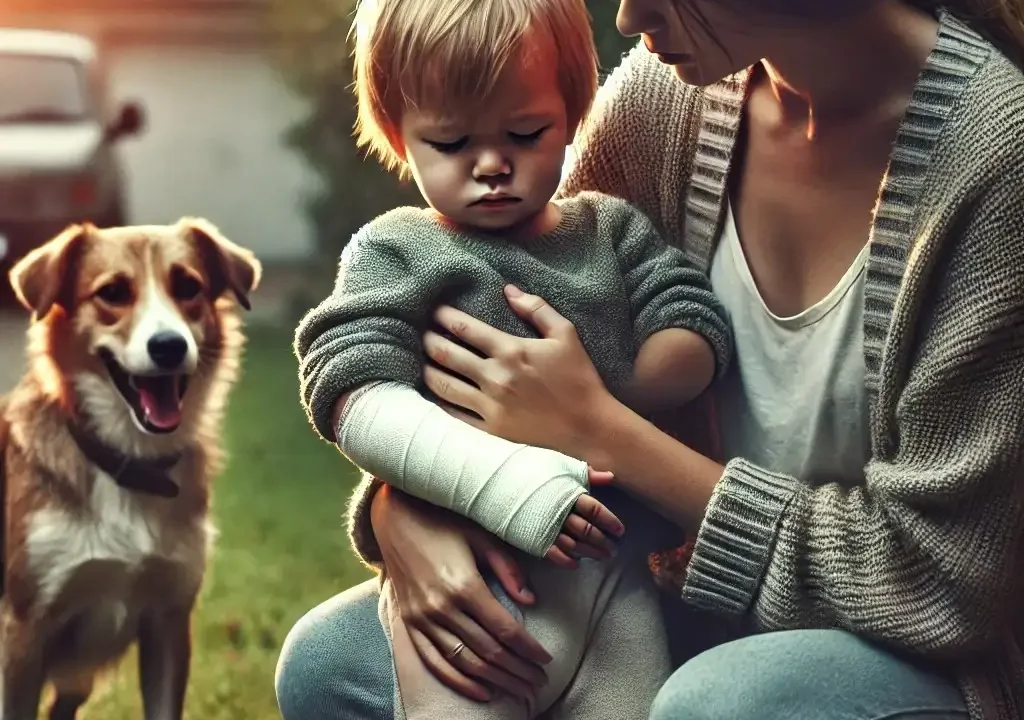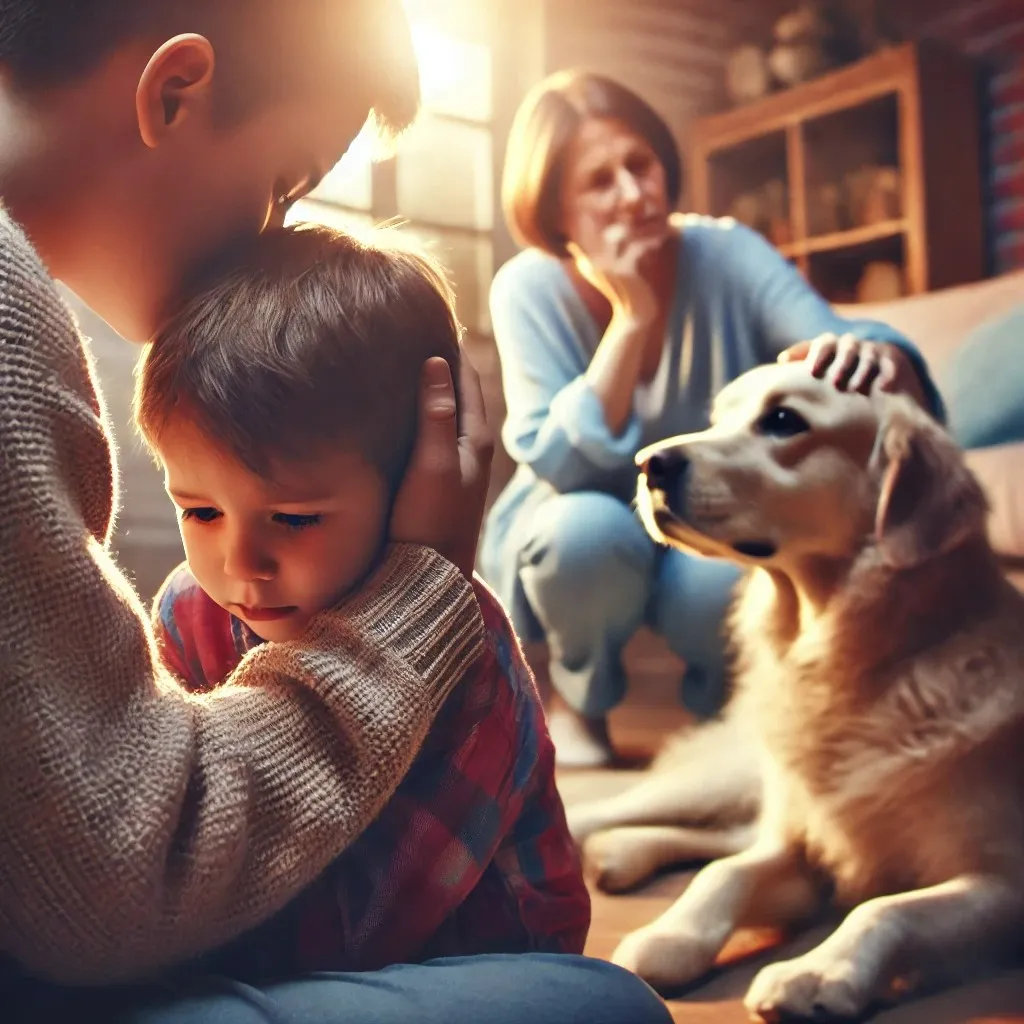Call for Action: Addressing Dog Safety After a Devastating Loss
In a sad loss, 3 year-old-mauled by dog Kingsley Wright, described as a cheerful and outgoing little girl, was found dead early Saturday morning after being attacked by two dogs December 27 in Cincinnati, Ohio. Lt. Jonathan Cunningham of the Cincinnati Police said that the attack took place inside a house on Stillwell Road.
911 calls reveal that Kingsley had been sleeping soundly on the living room couch when everything suddenly went horribly wrong. The account given by her father in his frantic call brings into view the abrupt loss:
“I just woke up, and my daughter is dead. There’s blood everywhere, I don’t know what happened,” he said into the phone, heavy with confusion and sorrow.
Despite his confidence that the family pets were secured, no one could have foreseen what unfolded. The scene was quickly responded to by Cincinnati Animal CARE, which removed three dogs from the home. The animals known to the family are under state-mandated 10-day quarantine for rabies observation according to Ohio law.
Remembering Kingsley Wright
She was a very cheerful girl with an exquisite laugh and smile. There is an obituary on Kingsley. She enjoyed singing and dancing to entertain her family, and everything in life is bright and lovely for her. Her tragic death has created an enormous emptiness in the lives of her dear ones and people around.
Funeral arrangements will be made at Brown Funeral Home in Wilmington where she resides with her family.
This is a tragic reminder of the responsibility associated with pets, especially if there are young kids in a house. Dogs can be that pet that becomes part of your family, yet they remain animals with instincts that sometimes lead to disastrous outcomes.
All this is with understanding the nature of the dogs, proper training, and proper socialization along with careful observation on one’s part.
Ohio law regarding dog attack
Ohio law holds the owner of a dog liable for the injury or death caused by their pet. In addition, the law requires any dog involved in a biting incident to be quarantined for 10 days to monitor for rabies. This case illustrates why such laws must be taken seriously for the protection of humans and animals alike.
Let’s Move Forward Together
The loss of Kingsley Wright has been a real tragedy for the entire community; it’s as if one shudders, thinking of a life lost like this, all because of uneducated pet animals and children coming into contact.
As we weep over a life cut short in her promise, we need to honor her by fostering awareness, responsibility, and care in our communities. Together, we can try to prevent such heartbreaking incidents in the future.
RIP Kingsley Wright: Your smile and laughter shall never fade in our hearts.
Summary
Understanding how dogs behave; knowing the main reasons why a dog would ever become aggressive and turn on one are: being trapped, territorial instincts, stress or overstimulation, can keep tragic incidents at bay.
Be on the lookout for pre-aggression cues including growling and snarling, baring of the teeth, rigid body, or even raised hackles and the tail. Step in before such a situation may get dangerous.
Teach your child to let dogs : Come to him, to monitor contact, respect dog boundaries, and never leave a child alone with a dog. Dog Owners should train and socialize their dog early. Health and behavioral checkup must be done to eliminate risk factors for accidents.
What to do if the Dog Attacks: First, calm down and take the dog away from the child, give first aid, and alert the nearby authorities.
Ohio Law: The owners are held liable for any injuries or death caused by their pets, and dogs involved in biting incidents have to be quarantined for 10 days to check for rabies.
Understanding Dog Behavior
Understanding Dog Behavior: Why Tragedies Happen and How to Prevent Them
When we hear about a 3-year-old mauled by a dog, the first question that often comes to mind is, “Why did this happen?” Understanding the reasons behind dog aggression and recognizing warning signs can go a long way in preventing such heartbreaking incidents.
Why Do Dogs Become Aggressive?
They always have a purpose for attacking others. Aggression is usually inspired by several root causes, mainly based on what is natural within them or an instinctive action to a circumstance. Some examples include:
Feeling of Being Cornered
Generally, dogs do become aggressive as a result of being cornered, threatened or scared. They may react more defensively if another person approaches suddenly or too aggressively.
A dog in pain or illness may lash out due to discomfort or self-protection. Even a friendly dog may become aggressive when wounded.
Territorial Instinct
The Best is very protective of his space, food, or toys. If he feels someone invades his territory, he will probably react to defend it by being aggressive.
Stress or Overstimulation
Dogs get stressed by loud noises, chaotic environments, or too much activity. Overexposure to unfamiliar people or situations may overwhelm a dog and make it aggressive.
Pre-Aggression Cues
Dogs often provide warning signs before they become aggressive. Families can intervene and perhaps avoid dangerous situations by paying attention to their body language. Some common signals include:
Growling or Snarling
The whines indicate discomfort, or the need to be alone. Never treat a growl by a dog lightly; rather, it states that the animal is uncomfortable and should not be disturbed.
Show of the Teeth or Snapping
A show of the dog’s teeth and snap of the air means that someone is uncomfortable. He will react if someone pursues him to that point and attack.
Body Rigidly Held
A stiff and tense body position often points to the dog being put on high alert, and as such, might feel threatened.
Hair Standing on Hackles
When the hair of the dog stands erect on its back, the dog is likely frightened or agitated.
Tail Movement
A stiff tail that is wagging could sometimes indicate tension rather than glee.
Tail tucked in between legs: fear or submission
Shy away or attempt to back away
Dogs that are uncomfortable will turn their heads or try to step back. This is how they let you know they need space.
Why You Should Watch for Pre-Warning Signs
Exposure of these signs may help families diffuse hazardous situations before they become worse. For example:
If your child plays too boisterously with the dog and it does growl, it’s a cue to intervene immediately.
A dog that retires or shows raised hackles should also be avoided so it can calm down.
It can be understood by knowing the triggers and body language of dogs. This will lead to safer environments for pets as well as humans. Education and awareness are what prevent tragedies such as the tragic case of a 3-year-old mauled by a dog.
Preventative Measures for Parents
Child safety should be the concern in all circumstances. Many such incidents, as the recent mauling of a 3-year-old, could have been prevented with education and precautions.
Dog Safety for Kids
Children, by nature, do not understand when their actions could provoke a dog. Parents need to teach the following to the kids:
- Always ask the dog owner before getting close.
- Avoid tugging on tails, ears, or fur.
Let Dogs Come to You: Instead of rushing toward a dog, let it approach calmly.
Always Supervise Interactions
Never leave young children alone with a dog, regardless of how friendly the dog seems. Even the gentlest pets can react unpredictably.
Monitor playtime closely.
- Stay alert in public spaces, especially parks or gatherings with unfamiliar dogs.
- Teach children to remain calm and avoid running or screaming, as this can excite or scare dogs.
Respect Dogs’ Boundaries
Just like humans, dogs also deserve their personal space. A dog should not be disturbed while in the process of eating, sleeping, or nurturing puppies.
Duties of Dog Owners
The latest catastrophe involving a mauled 3-year-old hints at the other end: how responsible dog owners are to the safety of human beings in front of their canines.
Training and Socialization
A good practice is for every dog to be trained early. This should make them peaceful when interacting with people and even other animals. Some of the essential tips involve the following practices:
- Teach basic commands including “sit, stay, leave it.”
- Slowly expose them to various surrounding and conditions
Make Your Home Safe for the Dog
Take pre-cautious measures to eliminate the risk factors of accidents through:
- Keeping them tied in open areas.
- Proper fencing prevents the dog from accessing areas containing children

Monitor Health and Behavior
Routine veterinary checkups guarantee that your dog is not in pain or experiencing medical conditions that may cause aggression. Observe the changes in your dog’s behavior as they are usually indicative of something bothering them.
What to Do in Case of an Attack
In tragic cases such as that of a 3-year-old-mauled-by-dog, quick action can save lives and reduce damage.
Ensure Immediate Safety
Take the dog away from the child calmly. There is no need to shout or make sudden movements because it will worsen the situation for the dog.
Shuttle the child away from the scene immediately
First aid
- Clean up the wounds by using soap and water. Infections are reduced because of this
- Apply pressure to the bleeding parts
- Seek medical attention immediately. Bites are deep
Report the incident
Report to local animal control or law enforcement. Reporting is a means of tracing the dangerous animals and ensuring proper action is taken.
Collaborate with the authorities to give them information about the attack.
Emotional Support
- A dog attack may leave deep emotional scars, especially in children.
- Be patient and attentive to your child’s fears.
- Consider counseling if necessary to help them work through the trauma.
Community Support and Action
This is the story of a 3-year-old-mauled-by -dog: a wake-up call for communities to focus on safety and education. Community-wide efforts may include:
Hosting workshops on dog behavior and child safety.
Encouraging responsible pet ownership through local campaigns.
Promoting stricter enforcement of leash laws and pet training requirements.
Final Thought {3 year-old-mauled by dog}
This recent tragedy of a 3 year-old-mauled by dog reminds us to be vigilant, educate people, and be compassionate. It can all work together in ensuring the safe behaviors between dogs and humans that such tragedies are prevented from happening.
We extend our deepest sympathies to the family of the young victim. Our community needs to stand together for the support of the victim’s family to make sure that something is done about creating a safer environment for our children and pets. Let’s work toward a future where every interaction of dogs and children is filled with joy, not fear.
FAQ
What are the most common reasons for dog attacks?
The common causes of dog attacks are:
Fear: The dog feels trapped or threatened.
Pain or illness: The dog is in pain or sick and reacts to the condition.
Territorial behavior: The dog may be protecting space, food, or toys.
Lack of proper socialization: Dogs are not exposed to different people and situations.
How can parents make sure that children are safe around dogs?
Educate children to approach dogs calmly and avoid sudden movements or loud noises.
Educate kids not to disturb a dog while it is eating, sleeping, or caring for puppies.
Always supervise interactions between dogs and young children.
What can owners do to prevent aggressive behavior?
Training: Teach basic obedience commands like "sit," "stay," and "leave it."
Socialization: Dogs are exposed to various environments, people, and other pets early.
Control: Dogs are leashed in public and securely enclosed within the house.
What indicators may tell a dog will become aggressive?
Some signs include
Growling or snarling
Baring teeth or snapping
Rigid posture and raised hackles (fur along the back)
Avoiding eye contact and backing away
A tail wag that is stiff or tucked between the legs.
What should be done when a dog attacks?
Protect the victim: Use objects to cover them or divert the dog's attention.
Do not run: It may provoke the dog.
Call for help: Dial emergency services immediately.
First aid: Control bleeding and get to the hospital as soon as possible.
Who is liable in case of a dog attack?
Owners of dogs that cause injuries or damages by the animal are liable for fines or other legal actions under local jurisprudence in most jurisdictions.
What Can Communities Do to Prevent Dog Attacks?
Educate dog owners and parents about pet safety.
Enforce leash laws and develop pet regulations.
Make available training programs and information for proper care of dogs.
What Needs to be Done After a Dog Attack?
Medical care: Treat the injured person accordingly, including prophylactic measures against rabies if applicable.
Report incidence: Inform your local animal control services or department of public safety.
Imprisonment of the dog: Local regulations should be followed regarding the dog's observation for signs of rabies and its behavior.
Are some breeds more dangerous?
Other breeds are aggressive and the behavior of a dog reflects more of their environment and how they were brought up. The training, socialization, and treatment of the individual dogs shine far brighter than the breed history.
What could be done to help the victim's family go on and help spread awareness of this issue?
Distribute safety materials for pets.
- Legislate stronger ownership and training about dogs.
- Allow the community to donate if that is needed.

